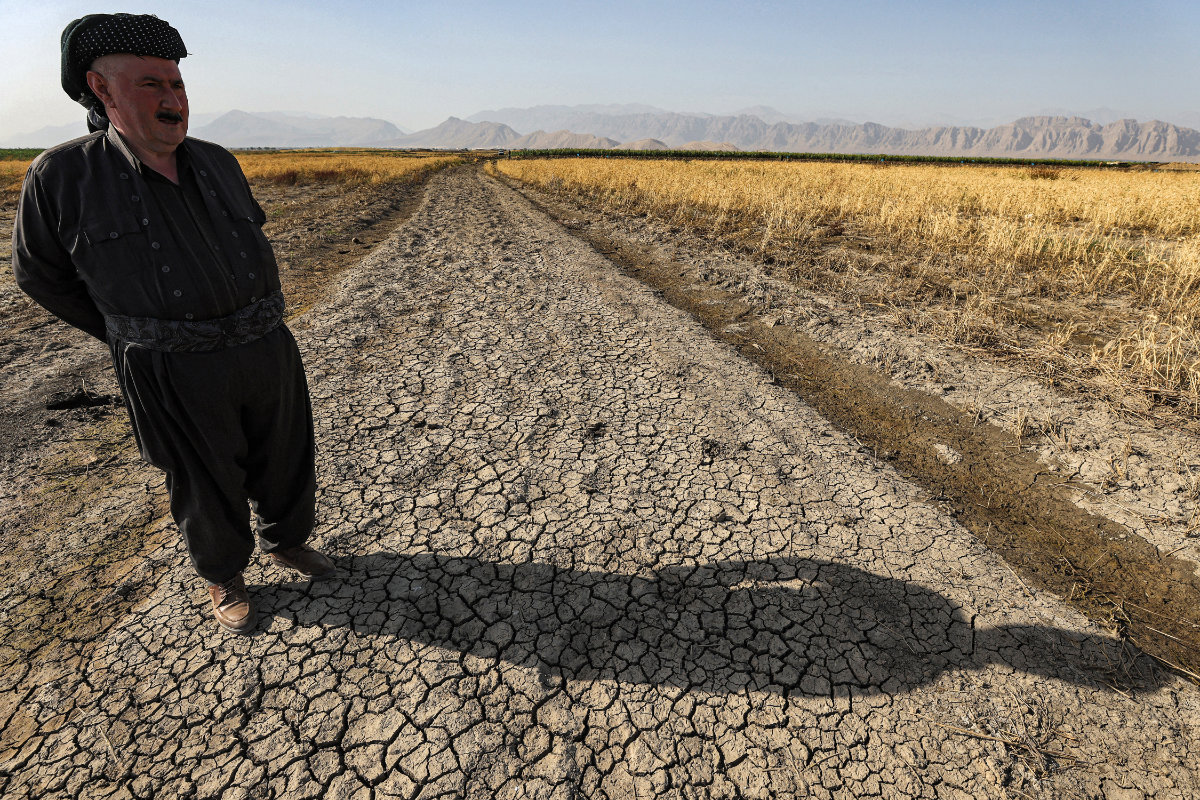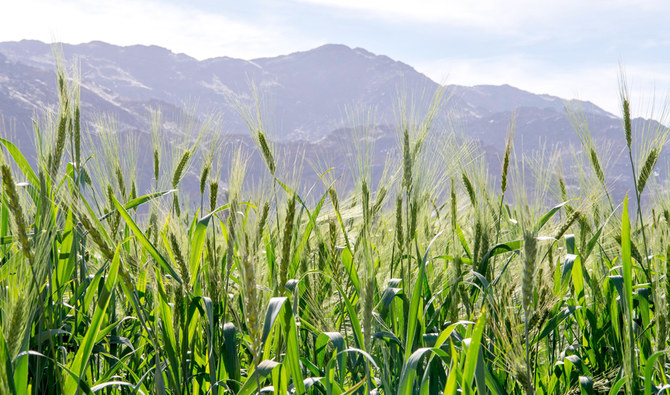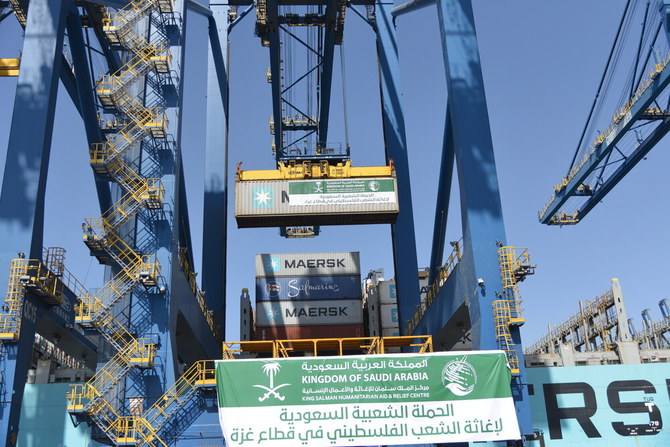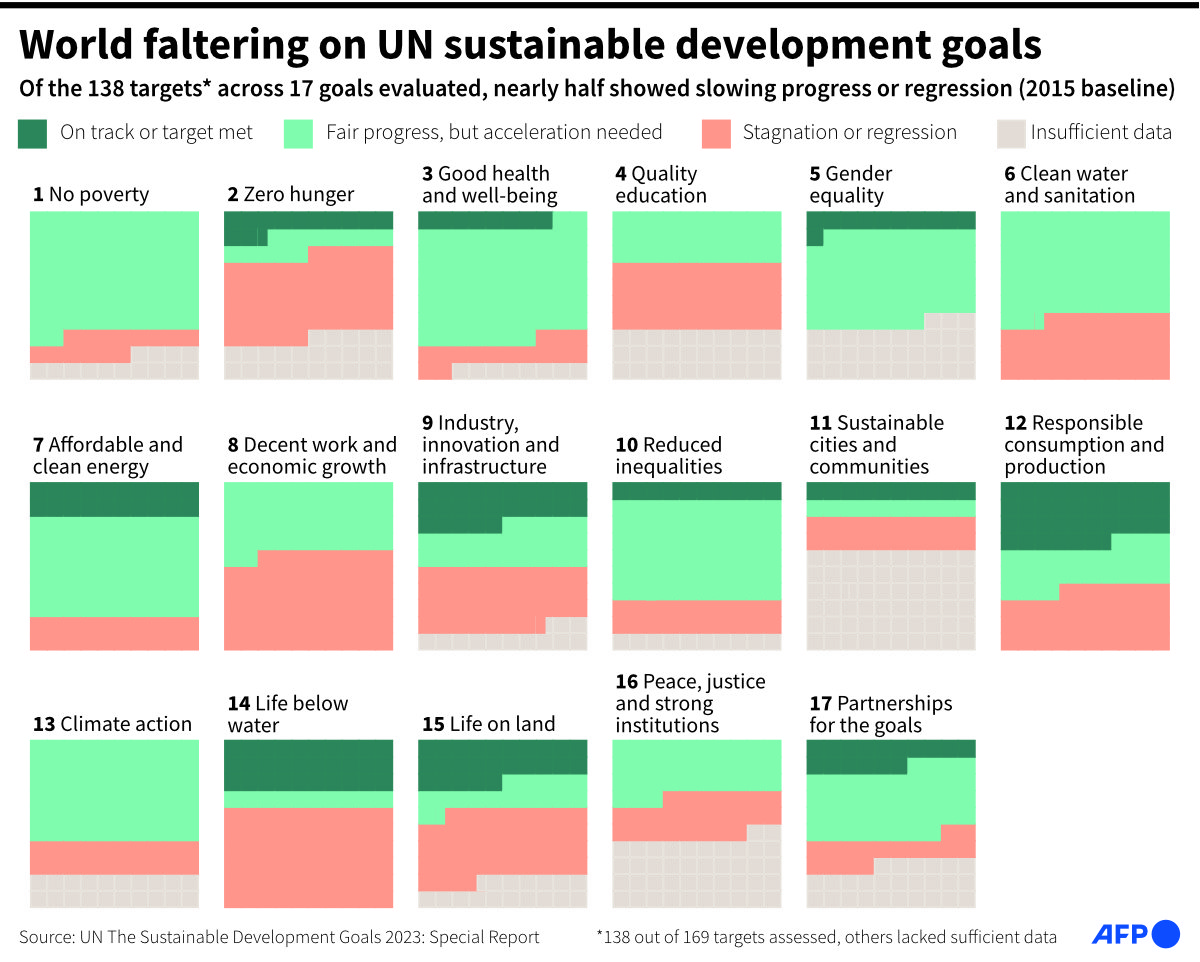Riyadh: Global food insecurity is much worse than previously thought. That's the conclusion of the State of Food Security and Nutrition in the World 2024 report, released this week by a coalition of United Nations agencies, which showed that efforts to tackle malnutrition are facing serious setbacks.
As countries around the world fall significantly short of achieving the UN's second Sustainable Development Goal of “Zero Hunger” by 2030, the report notes that climate change is increasingly seen as a key factor of escalation. It is known to cause hunger and food insecurity.

As a major importer of food, the Middle East and North Africa region is particularly vulnerable to weather-related crop failures in source countries and the imposition of protective tariffs and commodity price fluctuations.
“Climate change is driving food insecurity for the Middle East, where both global and local shocks are important,” David Laborde, director of the Agricultural Policy and Economics Department at the United Nations Food and Agriculture Organization, told Arab News. .
Now, especially for the Middle East, I think the global angle is important because the Middle East imports a lot of food. Even if you don't have a (climate) shock at home, if you don't have a drought or a flood at home – if it happened in Pakistan, if it happened in India, if it happened in Canada – the Middle East it will happen. Feel it.”
This section contains relevant reference points placed in the (comment field).
The World Food Security and Nutrition Report has been produced annually since 1999 by FAO, the International Fund for Agricultural Development, the United Nations Children's Fund, the World Food Program and the World Health Organization to monitor global progress towards ending hunger.
During a recent event at the United Nations headquarters in New York, the authors of the report emphasized the urgent need for creative and equitable solutions to address the financial deficit to help countries worsened by extreme hunger and malnutrition caused by climate change.
In addition to climate change, the report found that factors such as conflict and economic recession are becoming increasingly frequent and severe, affecting the affordability of a healthy diet, unhealthy food environments and inequality.

In fact, food insecurity and malnutrition are worsening due to persistent food price inflation that has undermined economic progress globally.
“There's also an indirect effect that we shouldn't overlook — how the climate shock interacts with conflict,” Laborde said.
In North Africa, for example, negative climate shocks can lead to more conflict, “either because people start competing for natural resources, access to water, or just because there might be other people in their area.” Be that they have nothing else to do. ” He said.
There are no jobs, they can't work in their fields and so they can join insurgencies or other elements.”
are youYou know?
More than 757 million people face hunger in 2023 – equivalent to one in 11 people worldwide and one in five people in Africa.
Despite progress in Latin America, the global prevalence of food insecurity has remained unchanged for three consecutive years.
The global prevalence of stunting and stunting among children under five has improved somewhat.
By the end of 2021, G20 countries have pledged to take $100 billion of unused special drawing rights held by central banks in high-income countries and allocate them to low- and middle-income countries.
However, since then, this pledged amount has been reduced by $13 billion, with the worst-off countries receiving less than 1 percent of this support.

Saudi Arabia is one of the countries that has exceeded its 20 percent commitment, along with Australia, Canada, China, France, and Japan, while others have failed to reach 10 percent or stopped engagement altogether.
“Saudi Arabia is a very large country in the Middle East, so what they're doing is important, but they also have financial capacity that many other countries don't have,” Laborde said.
This can be through their SDRs. It could also be through their sovereign wealth fund, because where you invest and how you invest matters in making the world more sustainable. So, I would say yes, prioritizing investments in low- and middle-income countries in food and security and nutrition-related programs can be important.

Although the prevalence of malnutrition in Saudi Arabia has decreased in recent years, the report shows that the rate of stunting among children has actually increased by 1.4 percent over the past 10 years.
Also, with the continued growth of the population, the number of children with overweight, obesity and anemia in women has increased. In this sense, it is not so much a lack of food as a lack of healthy eating habits.
“Saudi Arabia is a good example where I would say traditional hunger and lack of food … is slowly becoming a problem, but other forms of malnutrition are actually what's important,” Laborde said.

In 2023, an estimated 2.33 billion people worldwide faced moderate or severe food insecurity, and one in 11 faced hunger, exacerbated by a variety of factors including economic decline and climate change.
Affordability of healthy diets is also a critical issue, especially in low-income countries where more than 71 percent of the population cannot afford adequate nutrition.
In countries like Saudi Arabia, where overeating is a growing problem, Laborde suggests that proper investment in nutrition and health education, as well as policy adaptation, may be the solution.
While the Kingdom continues to support countries in crisis including Palestine, Sudan and Yemen through its humanitarian arm KSrelief, these countries continue to struggle with dire conditions. Gaza has been particularly damaged as a result of the war with Israel.

“Even before the start of the conflict, especially at the end of last year, the situation in Palestine was complex both in terms of the agricultural system (and population density). “There was already a problem of malnutrition,” Laborde said.
Now, what's true everywhere, in Sudan, in Yemen, in Palestine, when you start adding conflicts and military operations, people suffer a lot because you can actually destroy production. You destroy access to water. But when a truck or ship brings food, people can't go to the grocery store.
While Palestine and Sudan are extreme cases, an estimated 733 million people worldwide still face hunger, indicating a continuation of the high levels observed over the past three years.

“On the ground, we work with the World Food Program (and) with other organizations with the goal of getting food to people in need in Palestine,” Laborde said of FAO's work. “Before the conflict and after, we also work on rebuilding things. “We will work on those that need reconstruction, but without peace, there is limited work we can do.”
FAO helps food-insecure countries by providing seeds, animals, better technologies and irrigation solutions to develop production systems, and by providing veterinary services and motivating countries to adopt better policies to protect livestock from pests and diseases. .
The report's projections for 2030 show that about 582 million people will still suffer from chronic malnutrition, half of them in Africa. This mirrors the levels observed in 2015 when the SDGs were adopted, indicating that the plateau is progressing.

The report emphasizes the need to build better financial distribution systems in line with this year's theme: “Financing to End Hunger, Food Insecurity and All Forms of Malnutrition.”
“In 2022, there were a lot of headlines about world hunger, but today, when the number and number of hungry people have not disappeared, it has more or less disappeared,” Laborde said, referring to the devastating impact of the war in Ukraine. About global food prices
We must say that we do not fulfill the promises made by the politicians. The world today produces enough food, so it depends more on how we distribute it and how we access it. “This is a man-made problem, and therefore there must be a man-made solution.”

